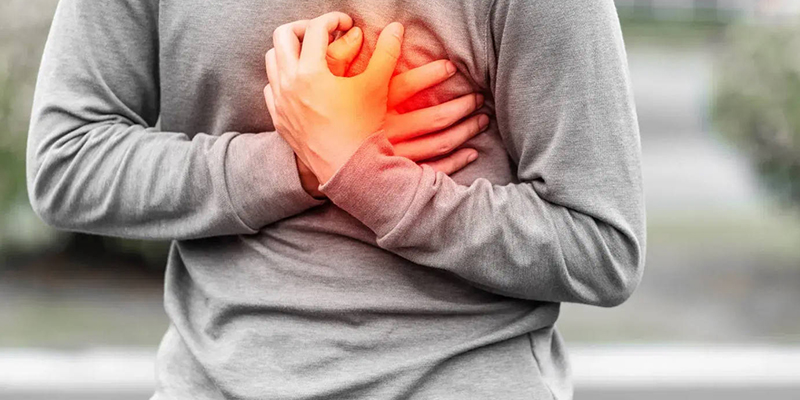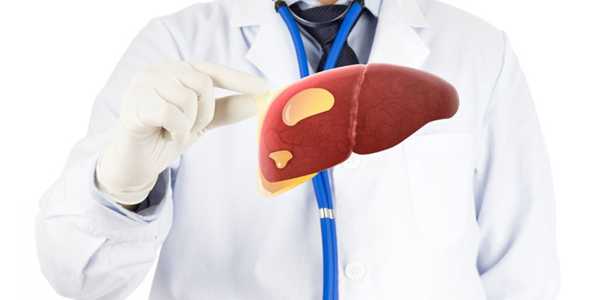Health & medical treatment
The Silent Threat Of Heart Disease
In an era marked by increasing sedentary behaviors and unhealthy dietary practices, heart disease has emerged as a critical public health issue affecting millions worldwide. This silent epidemic often presents without clear warnings, underscoring the necessity for individuals to be vigilant about recognizing the early signs of distress. Awareness of these symptoms can be the difference between life and death, as timely intervention is crucial for preventing potentially fatal heart attacks. By learning what to look for, readers can empower themselves to take decisive actions that protect their heart health, positioning themselves for a longer, healthier life.
In an era marked by increasing sedentary behaviours and unhealthy dietary practices, heart disease has emerged as a critical public health issue affecting millions worldwide. This silent epidemic often presents without clear warnings, underscoring individuals' need to recognize signs of distress. Awareness of these symptoms can be the difference between life and death, as timely intervention is crucial for preventing potentially fatal heart attacks. By learning what to look for, readers can empower themselves to take decisive actions that protect their heart health, positioning themselves for a longer, healthier life.
What Is a Heart Attack?
A heart attack, or myocardial infarction, occurs when blood flow to a part of the heart is obstructed, often due to a clot that forms in a coronary artery. This blockage can result in damage or death of heart muscle tissue due to a lack of oxygen. According to the Centers for Disease Control and Prevention (CDC), approximately 805,000 Americans experience a heart attack annually, highlighting the urgency of addressing this health crisis. Factors such as high blood pressure, elevated cholesterol levels, and smoking significantly increase the risk of a heart attack.

Early detection is paramount, as prompt medical intervention can greatly enhance survival outcomes. Preventative strategies—from maintaining a heart-healthy diet and engaging in regular physical activity to scheduling routine health screenings—play a vital role in mitigating the risk of heart attacks. Understanding these facets is essential for promoting heart health and effectively responding to potential warning signs.
Recognizing The Warning Signs Of a Heart Attack
1. Chest Discomfort
Chest discomfort often stands out as the most identifiable warning sign of a heart attack. Patients may experience pressure, squeezing, fullness, or pain, typically localized in the centre or left side of the chest. This discomfort can present through standard symptoms, such as sharp pain and atypical signals that may be less recognizable—like a feeling of heaviness or burning. Notably, women may exhibit signs that are frequently misinterpreted as unrelated issues, such as nausea or extreme fatigue. It is critical to discern these distinctions, as early intervention during a heart attack dramatically influences health outcomes.
2. Shortness Of Breath
Experiencing shortness of breath can occur unexpectedly during exertion or at rest, which can be a significant indicator of heart distress. This troubling symptom may arise suddenly, often coupled with sensations of tightness in the chest or overwhelming exhaustion. Those with pre-existing heart conditions may be particularly vulnerable, as their hearts might struggle to pump efficiently during physical Stress, resulting in inadequate oxygen supply to the body. For anyone facing this symptom, immediate medical evaluation is essential, especially if it coincides with chest discomfort.
3. Radiating Pain In Other Areas
Pain related to heart attacks frequently radiates beyond the chest, affecting various regions of the body. Discomfort may radiate to the arms, especially the left arm, back, neck, jaw, or stomach. This pain can often be mistaken for gastrointestinal or musculoskeletal pain, underscoring the need to recognize its potential significance as a warning sign. For instance, subtle discomfort in the neck or jaw might go unnoticed yet signal a heart problem, particularly when paired with other symptoms such as shortness of breath or sweating.
4. Excessive Sweating And Cold Skin
Excessive sweating, often described as cold sweats, constitutes another concerning indicator of a potential heart attack. Individuals experiencing this symptom commonly report feeling clammy and cold, an alarming response consistent with the body’s struggle as the heart falters. If excessive sweating accompanies other symptoms, it should not be ignored or downplayed.
5. Nausea Or Lightheadedness
Nausea or dizziness can be easily dismissed but may indicate profound health implications, including the onset of a heart attack. These symptoms often lead to confusion about their true nature and may be wrongly attributed to gastrointestinal disturbances or fatigue. Identifying these feelings as potential early signs of a cardiovascular event is crucial for enabling swift medical intervention.

Identifying Risk Factors For Heart Attacks
Heart attacks can occur unexpectedly, making the understanding of prevalent risk factors essential for effective prevention. Age significantly contributes to risk, with individuals over 45 facing heightened vulnerability. Gender also plays a role; men typically encounter more significant risks earlier compared to women, though post-menopause, women's risks dramatically increase. Additionally, family history cannot be overlooked—genetic predispositions can significantly heighten an individual's likelihood of experiencing heart issues.
Lifestyle choices are pivotal in mitigating these risks. For example, smoking doubles the likelihood of heart attacks, and studies show that quitting can substantially reduce this risk within one year. Furthermore, poor dietary choices—characterized by high consumption of saturated fats and sugars—are linked to heart disease. A 2015 study indicated that those adhering to diets rich in red and processed meats while low in fruits and vegetables face a 30% higher risk of heart attacks.
Lastly, a lack of physical activity considerably contributes to cardiovascular complications. Regular exercise not only strengthens the heart but also helps diminish Stress levels. Implementing lifestyle changes—like quitting smoking, improving dietary habits, and increasing physical activity—can notably reduce heart attack risks, fostering a healthier and longer life.
Immediate Steps To Take If Symptoms Develop
If you encounter symptoms associated with a heart attack—such as chest pain, shortness of breath, or discomfort radiating to your arms, back, neck, or jaw—taking immediate action is imperative. First, cease any activities and find a comfortable position to sit down. If possible, chew an aspirin unless you are aware of an allergy. Most critically, call emergency services immediately; do not attempt to drive yourself to the hospital. Time is of the essence, as prompt treatment can be life-saving. Stay proactive regarding your health; every second counts.
Heightening Awareness Of Heart Health
Recognizing the warning signs of a heart attack can be vital for timely intervention and potentially saving a life. In this article, we have emphasized key symptoms, identified contributing risk factors for heart attacks, and outlined essential actions to take if these signs arise. Understanding these indicators equips individuals to act swiftly, highlighting the importance of heart health awareness. We encourage readers to seek further education through trustworthy resources or consulting healthcare professionals. Proactive measures taken today can lead to a healthier tomorrow, ensuring that you and your loved ones stay informed and vigilant about maintaining good heart health.



